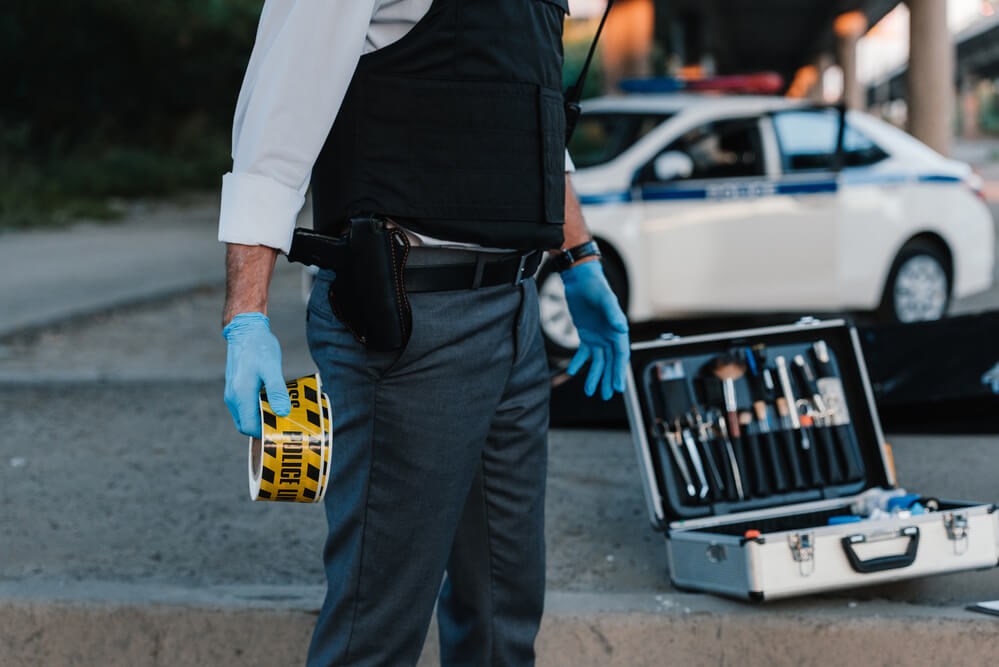$ 10 million due to homeless people: Seattle policeman sues city
A Seattle policeman filed a lawsuit against the city for 10 million dollars on Wednesday. The man claims that he was exposed to an “extremely dangerous artificial toxin” when he was tasked with clearing the homeless camp in the Sodo industrial area in January.

Фото: Depositphotos
Officer Timothy Gifford, a former member of the city’s navigation group tasked with helping to eliminate unauthorized homeless camps, claims he was exposed to high concentrations of the toxic chemical compounds of polychlorinated biphenyls (PCBs) on January 8 during the camp’s cleanup.
According to Gifford, exposure to chemicals worsened his state of health, as a result of which he was diagnosed with type 2 diabetes. According to his lawyer Lincoln Boregar, the officer was previously in good physical shape, not counting the condition of the liver.
“Exposure to these toxins damaged his already sensitive liver, and now he faces constant medical attention,” said Beauregar. “But the goal of my client in filing this lawsuit is not only his own medical needs.” He wants to make sure that other city workers who might be at risk know that they too may be sick. Therefore, Gifford wants the city to introduce protocols, and this did not happen again. ”
The representative of the Department of Finance and the city administration, which is engaged in the consideration of claims, said on Wednesday that the department does not comment on active or legal claims.
City officials acknowledge that the local industrial site where the camp was located was contaminated, so ongoing environmental rehabilitation should be undertaken.
Representatives from the Seattle Utilities and Homelessness Emergency Urban Response Project also answered questions from The Times. They stated that since then, the city has notified dozens of its workers about the potential impact of PCBs.
The municipality reported that the city’s efforts to identify and notify the homeless who camped there are ongoing.
On the subject: 'Excrement Patrol': How San Francisco Struggles with a growing number of homeless people
Gifford’s claim for damages also states that 58 of other city employees may also have been exposed to hazardous levels of PCBs at the site. It is said that they were neither warned nor trained in relation to possible dangers, they were not given adequate protective equipment for cleaning the camp in January.
Gifford was part of a city navigation group of policemen and workers charged with sending homeless people to shelters and cleaning camps that the city considered unsafe. Local authorities formed a team in February 2017, as efforts to clean up and eliminate dozens of camps for the homeless were intensified as part of a strategy to overcome the Seattle homelessness crisis.
On the subject:An immigrant from Ukraine told us personally how homeless lives in Los Angeles. VIDEO
About five months after cleaning, the Seattle Utility Inspector, Michael Jeffers, smelled strongly in that place. This prompted him to collect soil samples. As a result, experts revealed an extremely high level of PCB content, after which it was decided to enclose the territory. The city consulted with state and federal environmental regulators and began cleaning work.
The Federal Environmental Protection Agency considers high levels of PCBs a security concern, said Dave Bartus, project coordinator for toxic substances clearance.
“There was definitely a need for immediate cleaning,” Bartus said in a telephone interview this week.
Cleaning officials suspect the homeless camp collector could have taken apart the electrical transformer and drained contaminated fluid from it, Bartus said.
On the subject: Everything you didn't know about American police
“We don’t want to offend anyone,” said Bartus, “but that’s the only thing we could think of.”
Originally produced in the United States by the chemical giant Monsanto, PCBs were widely used in electrical equipment, hydraulic fluids, paints, lubricants, and other industrial products during the 1929 – 1979 years. The use of PCBs has been prohibited since 1979, but these chemicals are still widespread. As a result of spills, leaks and improper neutralization, ecosystem pollution occurs around the world.
People are exposed to PCBs by inhaling vapors, touching contaminated materials, or eating contaminated foods such as fish and dairy products. PCBs can have many serious adverse health effects - from skin rashes to autoimmune diseases, possibly even cancer.
Read also on ForumDaily:
What I learned about medicine in the United States when I got insurance
How to be treated in the US and get paid for it
Personal experience: 5 tips for those who are thinking about emigration
Subscribe to ForumDaily on Google NewsDo you want more important and interesting news about life in the USA and immigration to America? — support us donate! Also subscribe to our page Facebook. Select the “Priority in display” option and read us first. Also, don't forget to subscribe to our РєР ° РЅР ° Р »РІ Telegram and Instagram- there is a lot of interesting things there. And join thousands of readers ForumDaily New York — there you will find a lot of interesting and positive information about life in the metropolis.











